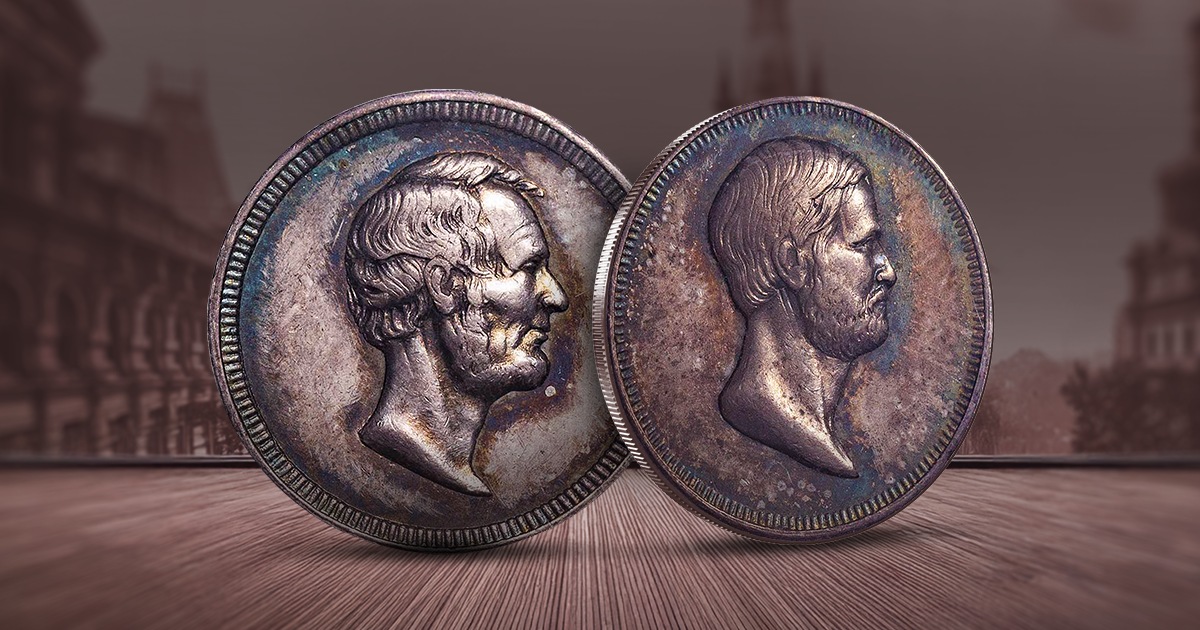
The Lincoln-Garfield Medal is a commemorative United States Mint medal issued in 1882 to honor the memories of Abraham Lincoln and James A. Garfield, the 16th and 20th presidents of the United States, respectively. Both men were assassinated during their terms in office, and the medal pays tribute to their contributions to the United States. The Lincoln-Garfield medal is a valuable collectible piece among numismatists.
Creation and Legislation of the Lincoln-Garfield Medallion
The Lincoln-Garfield Medal was authorized by an Act of Congress on August 7, 1882, during the 47th United States Congress, as part of a broader piece of legislation. It was passed just over one year after the assassination of President Garfield on July 2, 1881. The act sought to memorialize both presidents, who had suffered the same fates, and to preserve their legacies. Congressional members saw the commemorative medal as a means of remembering their efforts in preserving and leading the nation during turbulent times.
Design and Variations of the Lincoln-Garfield Medal
The Lincoln-Garfield Medal was designed by Charles E. Barber, the 6th Chief Engraver of the U.S. Mint. Barber was selected for this important task due to his reputation and expertise in high-relief engraving. His detailed and skillful portrayal of Presidents Abraham Lincoln and James A. Garfield in high relief on the medal showcases his craftsmanship.
The medal depicts a bust of each President on either side, symbolizing their shared legacies as leaders taken too early under tragic circumstances.
Obverse: The medal’s obverse depicts Abraham Lincoln’s bust, commemorating his leadership during the Civil War and his efforts to preserve the Union.
Reverse: The reverse of the medal portrays James A. Garfield, whose assassination in 1881 shocked the nation.
Barber’s fine engraving on both sides captures the dignity and legacy of these two fallen leaders.
Variations of the Lincoln-Garfield Medal
The Lincoln-Garfield Medal was issued in several compositions, including gold, silver, and bronze.
Mintage and Distribution of the Lincoln-Garfield Medal
There were 425 gold, and 2,200 silver medals minted in larger size medals issued. The larger gold medals sold for $9, while silver versions were priced at 60 cents. Smaller medals were also available at lower prices, making them more accessible to the general public.
Value of the Medal Today
Today, the Lincoln-Garfield Medal holds considerable value in the numismatic market. The value depends on several factors, such as the medal’s material, condition, and rarity.
Gold versions of the medal are especially valuable, with Mint State grades commanding prices in the thousands of dollars due to their limited availability.
Silver and bronze variations are more common. Silver medals typically sell for $150 to $500, depending on their condition. Bronze medals, while more affordable, still hold significant collectible value, usually priced between $50 and $150.
The historical significance and reverence for two iconic U.S. president makes the medal a prized item in any U.S. numismatic collection.
Legacy and Collectability
The Lincoln-Garfield Medal remains popular among numismatists and collectors. It not only commemorates two presidents but also represents a significant moment in U.S. history. The medal serves as a reminder of the sacrifices made by both Lincoln and Garfield, who led the nation through challenging times before meeting tragic ends. Its detailed design, authorized legislation, and historical importance make it a sought-after piece for collectors interested in U.S. presidential memorabilia and 19th-century coinage.




